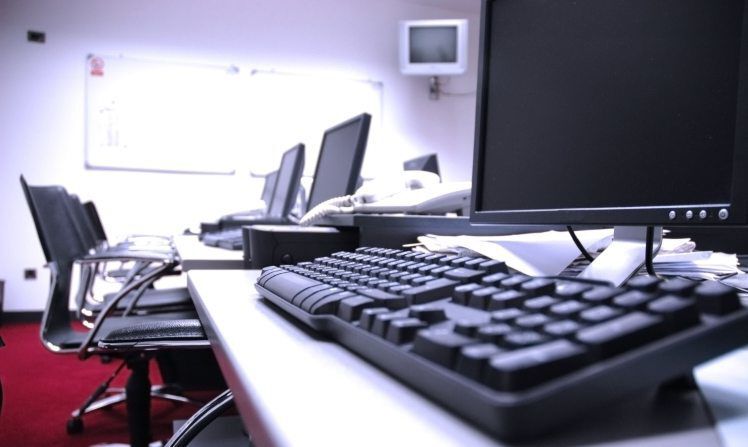It’s a bold forecast that some say borders on fantasy: Wall Street banks and Federal Reserve officials see powerful employment gains during the next three years that evade the curse of past recessions. If they’re right, millions of Americans will leap back into the workforce as soon as vaccines against the coronavirus roll out. If they are wrong, the U.S. enters another so-called jobless recovery where payroll gains lag a pickup in economic growth and production.
The optimists, including Federal Reserve Vice Chair Richard Clarida, say this economic crisis is different because it was caused by something more like a natural disaster than a financial shock. Once the pandemic has subsided, pent-up demand for services, entertainment and even travel will unleash and companies will hire or rehire.
“The economy has turned out to be more resilient in adapting to the virus,” Clarida said in remarks to the Council on Foreign Relations on Jan. 8. “Most of my colleagues and I revised up our outlook for the economy over the medium term.”
The pessimists are more cautious, pointing to signs that this time around many workers might drop out of the labor force and a huge swath of the jobs lost will never come back. That will force many to reskill or relocate, which can take years while the transition falls hardest on those with less income and education.
Low-wage workers are particularly at risk of being left behind, especially if they live in more rural areas, says Harvard professor Raj Chetty.
“There are early signs of a potential jobless recovery from this recession that could be quite persistent geographically,” Chetty said at a conference in January.
Jobs Data
A January jobs report shows just how important controlling the virus is to future job gains. Nonfarm payrolls decreased by 140,000 from the prior month, while the unemployment rate held at 6.7%.
The weakness was concentrated in restaurants, bars and other businesses hit hard by fresh pandemic restrictions. Many of the 3.9 million long-term unemployed — those out of a job for at least 27 weeks as of December — are in these industries. The leisure and hospitality industry, for instance, makes up 22.6% of total long-term unemployment.
There are reasons for hope in this grim data, said Julia Coronado, founding partner at MacroPolicy Perspectives LLC.
“There is plenty of evidence in here that if we can get the virus under control and begin reopening, many of these jobs can come back,” she said, adding that she also worries business-strategy changes could have a lasting impact on some service sector jobs. “The idea that we will flip a switch and have a frictionless recovery in the labor market seems highly unlikely.”
Fed Outlook
U.S. central bankers expect the unemployment rate to fall to 5% by the end of this year, to 4.2% in 2022, and 3.7% by the end of 2023. That would bring it in the vicinity of the jobless rate in February — of 3.5% — before the outbreak of the virus. Goldman Sachs Group Inc. economists also are positive on the jobs outlook. They expect the unemployment rate to dip to 4.8% at the end of 2021, and to be around pre-pandemic lows by the end of 2023.
One of the things they point to is the prospect for additional government support from the administration of President Joe Biden.
What’s unusual about these outlooks is that it hasn’t happened that way in recent recoveries. Take the 2008-2009 financial crisis. It took about eight years for the labor market to heal. After the 2001 recession, it was nearly six years before the unemployment rate closed in on prior levels.
Dropping Out
The unemployment rate is just one measure of labor market health and its decline might not signal a full recovery.
The pandemic has reduced labor-force participation, the share of the working-age population looking for a job or who are employed. People drop out of the labor force to take care of their family, acquire more education or because their skills don’t match the needs of employers.
Those decisions are “sticky,” notes Stephanie Aaronson, head of economic studies at the Brookings institution, meaning they aren’t reversed quickly.
Chris Fryett is an example. He worked as a software developer for International Business Machines Corp. for 15 years before being let go in June in a reorganization. He thought he would land a job quickly.
But “employers weren’t really talking,” he says, so he decided to go back to school to earn a four-year degree in biology.
Fryett, 51, and many Americans like him, is now out of the labor force, and one of the big questions is when will they come back?
Return to Normal
The answer to that depends on the huge uncertainty about whether the pandemic has changed businesses temporarily — or for good. Ashok Bajaj, a well-known Washington, D.C., restaurateur, is one of those business owners who says it could take years for consumers to feel safe again, even with a vaccine.
Bajaj had to close one of his 10 restaurants and let go about 250 staff members. He doesn’t expect to put the same number of seats in his restaurants as he reopens.
“People will revert back to their old habits gradually,” he said. “Is it going to happen in 2021? No, it is not.”
Claudia Sahm, a former Fed Board forecaster who now runs a firm, says policy should aim at a strong labor market recovery — but it won’t be easy.
“You can’t have malaise this long — we are still down 10 million jobs since February — and expect it to unwind this fast,” she says. “This is very different recession and there is massive uncertainty around everybody’s forecast.
Craig Torres writes for Bloomberg News.


